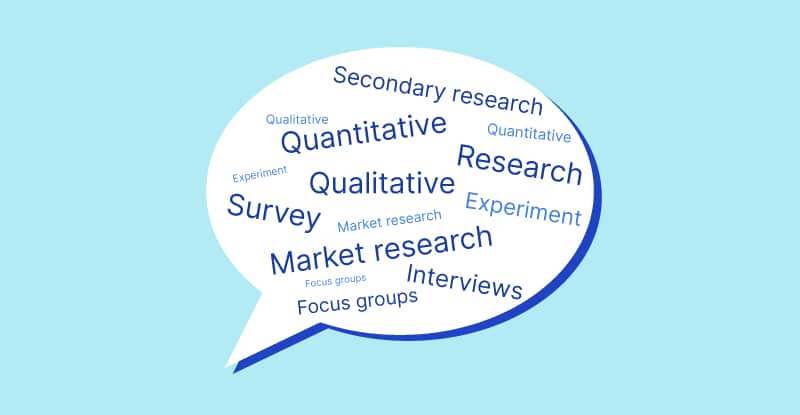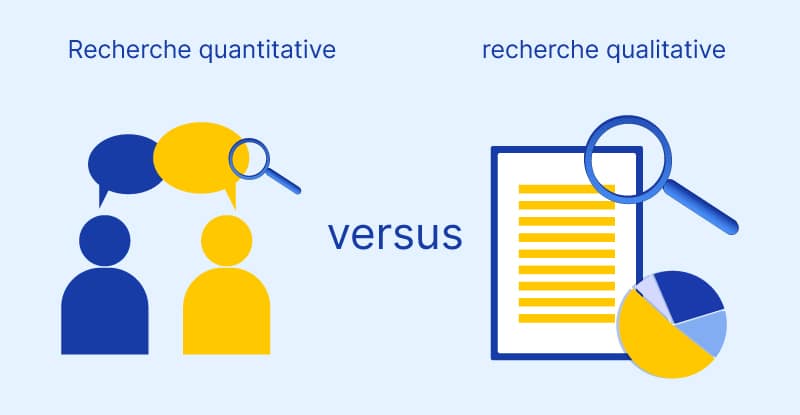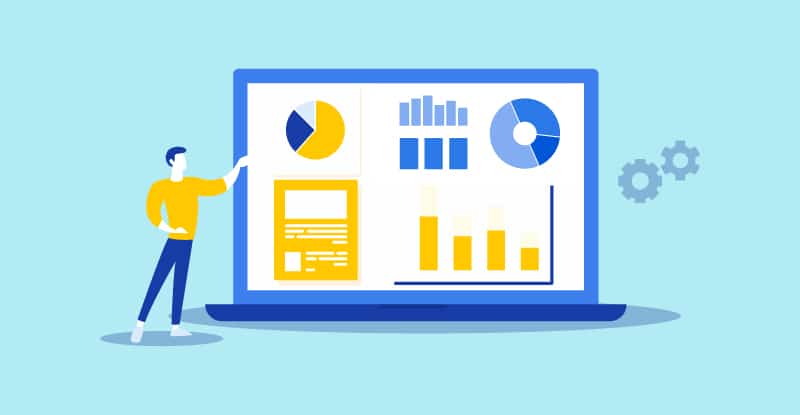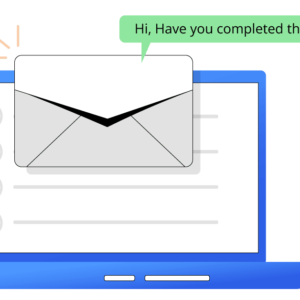How to get more survey responses
How to get more survey responses SHARE THE ARTICLE ON Table of Contents We all know how surveys help in understanding customer satisfaction an attracting

Find the best survey software for you!
(Along with a checklist to compare platforms)
Take a peek at our powerful survey features to design surveys that scale discoveries.
Explore Voxco
Need to map Voxco’s features & offerings? We can help!
Find the best customer experience platform
Uncover customer pain points, analyze feedback and run successful CX programs with the best CX platform for your team.

We’ve been avid users of the Voxco platform now for over 20 years. It gives us the flexibility to routinely enhance our survey toolkit and provides our clients with a more robust dataset and story to tell their clients.
Steve Male
VP Innovation & Strategic Partnerships, The Logit Group
Explore Regional Offices

Find the best survey software for you!
(Along with a checklist to compare platforms)
Take a peek at our powerful survey features to design surveys that scale discoveries.
Explore Voxco
Need to map Voxco’s features & offerings? We can help!
Find the best customer experience platform
Uncover customer pain points, analyze feedback and run successful CX programs with the best CX platform for your team.

We’ve been avid users of the Voxco platform now for over 20 years. It gives us the flexibility to routinely enhance our survey toolkit and provides our clients with a more robust dataset and story to tell their clients.
Steve Male
VP Innovation & Strategic Partnerships, The Logit Group
Explore Regional Offices

Find the best survey software for you!
(Along with a checklist to compare platforms)
Take a peek at our powerful survey features to design surveys that scale discoveries.
Explore Voxco
Need to map Voxco’s features & offerings? We can help!
Find the best customer experience platform
Uncover customer pain points, analyze feedback and run successful CX programs with the best CX platform for your team.

We’ve been avid users of the Voxco platform now for over 20 years. It gives us the flexibility to routinely enhance our survey toolkit and provides our clients with a more robust dataset and story to tell their clients.
Steve Male
VP Innovation & Strategic Partnerships, The Logit Group
Explore Regional Offices

Transform your insight generation process
Use our in-depth online survey guide to create an actionable feedback collection survey process.
SHARE THE ARTICLE ON
Research methods are nothing but the way in which you carry out your research and collect information. Your research method must be peculiar to the kind of information you are going to collect and the end result you wish to achieve with it. Choosing the right research collection mechanism, tool, and analysis method lie at the core of your research.
In this blog, we will focus on the advantages and disadvantages of research. We will look through different types of methods used and the pros and cons of each.
When planning your research you need to make two decisions –
These two questions will help you map out your entire research plan.
There are three ways research methods are divided. Each of these ways serves a certain purpose. These three ways depend on how you want to collect the data.
Now that we have established the three different approaches, let’s dive deeper into the advantages and disadvantages of research.

We will look at the pros and cons as we explain each form of the data collection method. We will explain all six types of methods in this section.
On the basis of the data you want to collect, your research methodology can be bifurcated into these two types of approaches.
Qualitative data includes textual information that presents insights and explanations in the respondents’ own words. Unstructured questions which allow the respondents to elaborate their opinions without any restrictions are included under this sub-type.
Now let’s look at the advantages and disadvantages of research type.
Advantages
Disadvantages
[Related read: Quantitative Vs Qualitative Research]
This includes pre-planned questions which provide numeric answers to questions. This method usually explains the “what” in research.
The quantitative method helps discover trends and patterns in customer feedback. It also helps establish the initial groundwork needed to conduct in-depth research.
Let’s see the advantages and disadvantages of research collecting quantitative data.
Advantage
Disadvantage
Based on how you want to conduct the research we can categorize them into the following two research methods.
The descriptive method is based on gathering data without indulging or intervening. This type of way is usually used to describe characteristics or phenomena based on the viewpoints provided by a target set of people.
Let’s explore the advantages and disadvantages of research conducted without intervention.
Advantage
Disadvantage
This method is focused on using variables to study relationships in a controlled environment. Independent variables are manipulated to study their impact on the dependent variable.
Let’s take a look at the advantages and disadvantages of research conducted by experiment.
Advantages
Disadvantages
Do you want to run surveys using an online survey tool? Conduct interviews in person? Or, do you want to use data from previous research conducted by other researchers?
Depending on the channels you use to collect the data, the research method can be divided into primary or secondary types.
This method collects first-hand data directly from the respondents or the target group. Interviews focus groups and surveys are just some of the methods suitable for this mechanism.
Now let’s look at the advantages and disadvantages of research conducted by gathering first-hand data.
Advantages
Disadvantages
Secondary data uses existing information collected by other researchers to answer research questions. The nature of the documents that the organization uses for gathering information depends on the research topic.
Let’s see what are the advantages and disadvantages of research when you use existing data.
Advantages
Disadvantages
[Related read: Primary Vs Secondary Research]
Now that we have looked at the advantages and disadvantages of research in all its forms and approaches, let’s go to the second step in the research – data analysis.
Methodologies are also distinguished in terms of how a company evaluates the data that has been collected by it. It’s not the data that you collect but how you choose to use it that makes a difference.
These analysis methods prevent data overload by categorizing and summarizing it in ways that facilitate deeper understanding. Based on the nature of the data, there are two categories of analysis: Quantitative and Qualitative analysis.
It is important to understand how these two types of analysis are performed because they also contribute to the advantages and disadvantages of research.
Qualitative analysis is used to extract meaning and highlight central ideas in textual data. It reflects upon the key sentiments projected in an open-ended comment, idea, feedback, or any other unrestricted information.
The qualitative analysis deals with inexact information which can be difficult to compute and is highly variable. This necessitates a meticulous understanding of each response for grasping the crux of the respondent’s point of view.
In this method, the data collected is subjected to specialized statistical analysis tools that are implemented by trained experts to ensure accuracy. The data analysis method opted for, depends on the needs of the organization and is meant for increased and simple comprehension by stakeholders.
These analyses produce substantive results that can be used to back up decisions. Close-ended, structured, and experimental questions can be evaluated using this method. The summary so obtained can be easily exported in relevant formats for easy usability.

This sums up the advantages and disadvantages of research and how each type of approach contributes to the research goal.
When you plan your research use these three divisions to decide the best way to get the most out of it. Use the questions mentioned at the top to determine the best way to conduct your research and gather reliable and accurate data.
Read more
How to get more survey responses SHARE THE ARTICLE ON Table of Contents We all know how surveys help in understanding customer satisfaction an attracting

Incentives for survey participation is used to nudge respondents to finish a survey. Check out how to incentivize survey responses in our in-depth article.

What are survey reminders and when should you send them? SHARE THE ARTICLE ON Table of Contents In this world where everyone is in a

Customer Segments: Introduction, Its Types, and Examples SHARE THE ARTICLE ON Share on facebook Share on twitter Share on linkedin Table of Contents Customers include
What is customer 360? SHARE THE ARTICLE ON Table of Contents What do you mean by customer 360? Customer 360 or customer 360 view, is

Why businesses need customer experience software, and how they can get the most from it? Try a free Voxco Online sample survey! Unlock your Sample
We use cookies in our website to give you the best browsing experience and to tailor advertising. By continuing to use our website, you give us consent to the use of cookies. Read More
| Name | Domain | Purpose | Expiry | Type |
|---|---|---|---|---|
| hubspotutk | www.voxco.com | HubSpot functional cookie. | 1 year | HTTP |
| lhc_dir_locale | amplifyreach.com | --- | 52 years | --- |
| lhc_dirclass | amplifyreach.com | --- | 52 years | --- |
| Name | Domain | Purpose | Expiry | Type |
|---|---|---|---|---|
| _fbp | www.voxco.com | Facebook Pixel advertising first-party cookie | 3 months | HTTP |
| __hstc | www.voxco.com | Hubspot marketing platform cookie. | 1 year | HTTP |
| __hssrc | www.voxco.com | Hubspot marketing platform cookie. | 52 years | HTTP |
| __hssc | www.voxco.com | Hubspot marketing platform cookie. | Session | HTTP |
| Name | Domain | Purpose | Expiry | Type |
|---|---|---|---|---|
| _gid | www.voxco.com | Google Universal Analytics short-time unique user tracking identifier. | 1 days | HTTP |
| MUID | bing.com | Microsoft User Identifier tracking cookie used by Bing Ads. | 1 year | HTTP |
| MR | bat.bing.com | Microsoft User Identifier tracking cookie used by Bing Ads. | 7 days | HTTP |
| IDE | doubleclick.net | Google advertising cookie used for user tracking and ad targeting purposes. | 2 years | HTTP |
| _vwo_uuid_v2 | www.voxco.com | Generic Visual Website Optimizer (VWO) user tracking cookie. | 1 year | HTTP |
| _vis_opt_s | www.voxco.com | Generic Visual Website Optimizer (VWO) user tracking cookie that detects if the user is new or returning to a particular campaign. | 3 months | HTTP |
| _vis_opt_test_cookie | www.voxco.com | A session (temporary) cookie used by Generic Visual Website Optimizer (VWO) to detect if the cookies are enabled on the browser of the user or not. | 52 years | HTTP |
| _ga | www.voxco.com | Google Universal Analytics long-time unique user tracking identifier. | 2 years | HTTP |
| _uetsid | www.voxco.com | Microsoft Bing Ads Universal Event Tracking (UET) tracking cookie. | 1 days | HTTP |
| vuid | vimeo.com | Vimeo tracking cookie | 2 years | HTTP |
| Name | Domain | Purpose | Expiry | Type |
|---|---|---|---|---|
| __cf_bm | hubspot.com | Generic CloudFlare functional cookie. | Session | HTTP |
| Name | Domain | Purpose | Expiry | Type |
|---|---|---|---|---|
| _gcl_au | www.voxco.com | --- | 3 months | --- |
| _gat_gtag_UA_3262734_1 | www.voxco.com | --- | Session | --- |
| _clck | www.voxco.com | --- | 1 year | --- |
| _ga_HNFQQ528PZ | www.voxco.com | --- | 2 years | --- |
| _clsk | www.voxco.com | --- | 1 days | --- |
| visitor_id18452 | pardot.com | --- | 10 years | --- |
| visitor_id18452-hash | pardot.com | --- | 10 years | --- |
| lpv18452 | pi.pardot.com | --- | Session | --- |
| lhc_per | www.voxco.com | --- | 6 months | --- |
| _uetvid | www.voxco.com | --- | 1 year | --- |